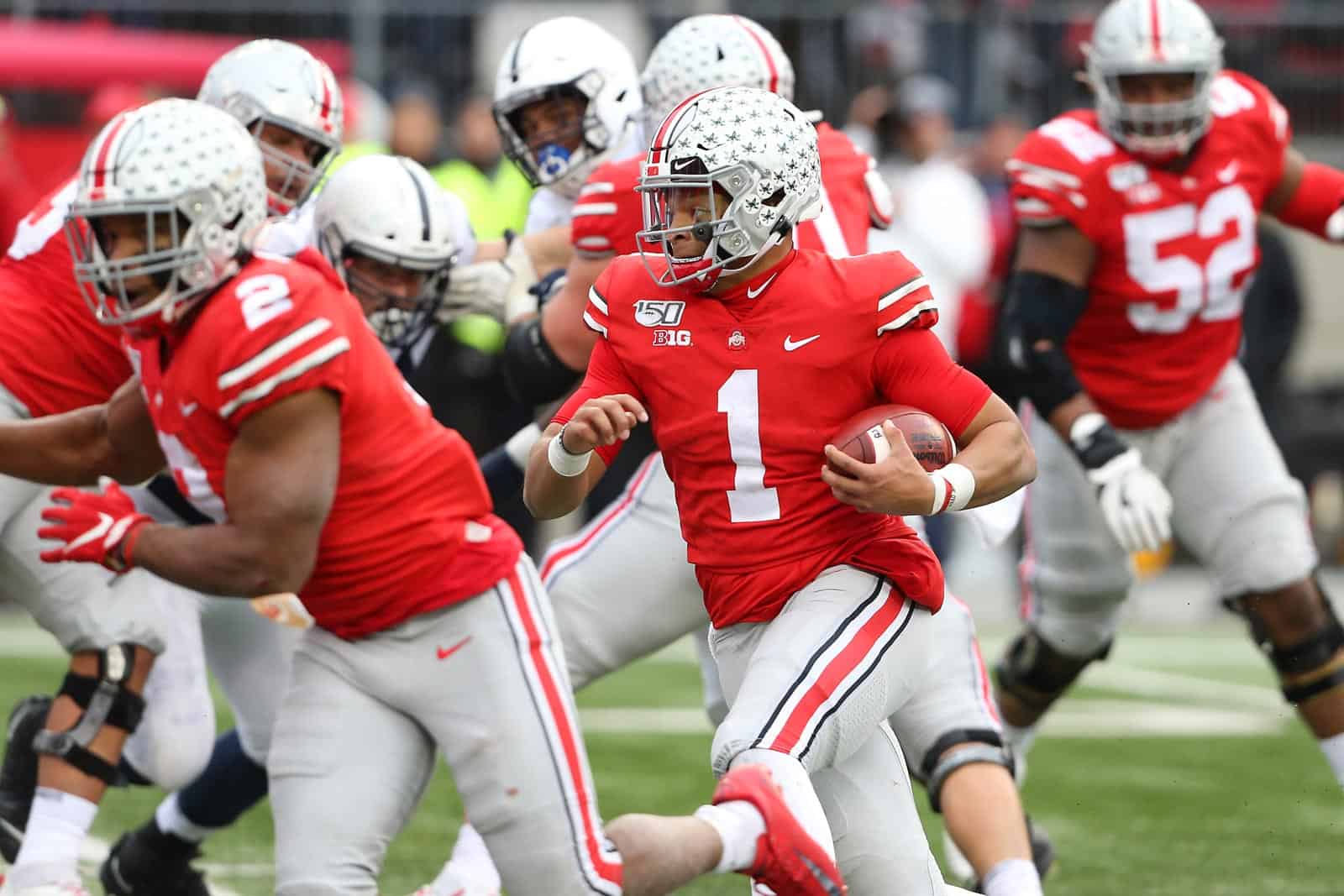The 2019 college football regular-season is nearly complete with only the conference championship games and the Army-Navy Game remaining.
With all of the College Football Playoff contenders having completed their regular-season schedules, we can now get a clearer picture of which teams have played the toughest schedule.
Utilizing the five computer indexes that were formerly included in the Bowl Championship Series (BCS) rankings, below are the current strength of schedule rankings for the College Football Playoff Top 10 (as of the Nov. 25 CFP rankings).
For simplicity, we averaged the five strength of schedule ratings for each team. Teams are listed beginning with the toughest schedule played first.
College Football Strength of Rankings
Ohio State – Average SOS: 17.2
Anderson & Hester: 15
Billingsley Report: 29
Colley Matrix: 6
Jeff Sagarin: 29
Massey Ratings: 7
Penn State – Average SOS: 20.0
Anderson & Hester: 10
Billingsley Report: 10
Colley Matrix: 23
Jeff Sagarin: 41
Massey Ratings: 16
LSU – Average SOS: 22.2
Anderson & Hester: 39
Billingsley Report: 9
Colley Matrix: 35
Jeff Sagarin: 25
Massey Ratings: 3
Oklahoma – Average SOS: 34.8
Anderson & Hester: 32
Billingsley Report: 27
Colley Matrix: 75
Jeff Sagarin: 22
Massey Ratings: 18
Georgia – Average SOS: 35.2
Anderson & Hester: 31
Billingsley Report: 49
Colley Matrix: 40
Jeff Sagarin: 36
Massey Ratings: 20
Baylor – Average SOS: 55.8
Anderson & Hester: 57
Billingsley Report: 55
Colley Matrix: 87
Jeff Sagarin: 42
Massey Ratings: 38
Minnesota – Average SOS: 56.8
Anderson & Hester: 52
Billingsley Report: 51
Colley Matrix: 78
Jeff Sagarin: 59
Massey Ratings: 44
Alabama – Average SOS: 58.8
Anderson & Hester: 71
Billingsley Report: 66
Colley Matrix: 82
Jeff Sagarin: 53
Massey Ratings: 22
Utah – Average SOS: 62.6
Anderson & Hester: 75
Billingsley Report: 60
Colley Matrix: 81
Jeff Sagarin: 54
Massey Ratings: 43
Clemson – Average SOS: 74.0
Anderson & Hester: 78
Billingsley Report: 74
Colley Matrix: 90
Jeff Sagarin: 66
Massey Ratings: 62
With the latest College Football Playoff rankings set for release on Tuesday evening, let’s also take a look at the strength of schedule of a few teams that could make their way into the Top 10:
Auburn – Average SOS: 5.8
Anderson & Hester: 16
Billingsley Report: 5
Colley Matrix: 5
Jeff Sagarin: 2
Massey Ratings: 1
Wisconsin – Average SOS: 18.0
Anderson & Hester: 11
Billingsley Report: 21
Colley Matrix: 9
Jeff Sagarin: 38
Massey Ratings: 11
Florida – Average SOS: 35.2
Anderson & Hester: 51
Billingsley Report: 40
Colley Matrix: 37
Jeff Sagarin: 36
Massey Ratings: 12
Additionally, below are the strength of schedule rankings for the three highest ranked Group of Five teams:
Cincinnati – Average SOS: 50.0
Anderson & Hester: 36
Billingsley Report: 58
Colley Matrix: 32
Jeff Sagarin: 70
Massey Ratings: 54
Memphis – Average SOS: 71.2
Anderson & Hester: 61
Billingsley Report: 90
Colley Matrix: 67
Jeff Sagarin: 72
Massey Ratings: 66
Boise State – Average SOS: 89.0
Anderson & Hester: 83
Billingsley Report: 105
Colley Matrix: 86
Jeff Sagarin: 88
Massey Ratings: 83
SOURCES:



I feel like the Clemson-UCF comparison has to be made here.
2017 UCF:
Anderson & Hester: UCF 70, Clemson 78
Billingsley: UCF 76, Clemson 74
Colley: UCF 67, Clemson 90
Massey: UCF 64 (post-bowl), Clemson 62
Sagarin: UCF 72 (post-bowl), Clemson 66
Obviously UCF’s post-bowl ranking in Massey and Sagarin moved up from where it was before, meaning those rankings would be slightly more in favor of Clemson than they had been. But the point stands that the two are pretty clearly comparable in terms of SOS rankings, as shown by the A&H, Billingsley, and Colley rankings. The committee never seriously considered UCF for the playoff, asserting that their SOS was disqualifying. Clemson, on the other hand, is very clearly going to make the playoff despite a comparable SOS, with basically no discussion at all about whether their SOS is disqualifying.
Now, the point I’m making is not “Clemson shouldn’t be in the playoff.” Their margin of victory and status as defending champions mean they clearly should. My point is that UCF should have been considered alongside Ohio State and Alabama in 2017. The decision isn’t obviously in UCF’s favor, but remember they were ranked 13th by the committee, meaning they weren’t even in serious consideration. This shows clear bias against the G5 on the part of the committee.
The average for Ohio State is wrong…probably a typo. Should be 17.2, not 13.2.